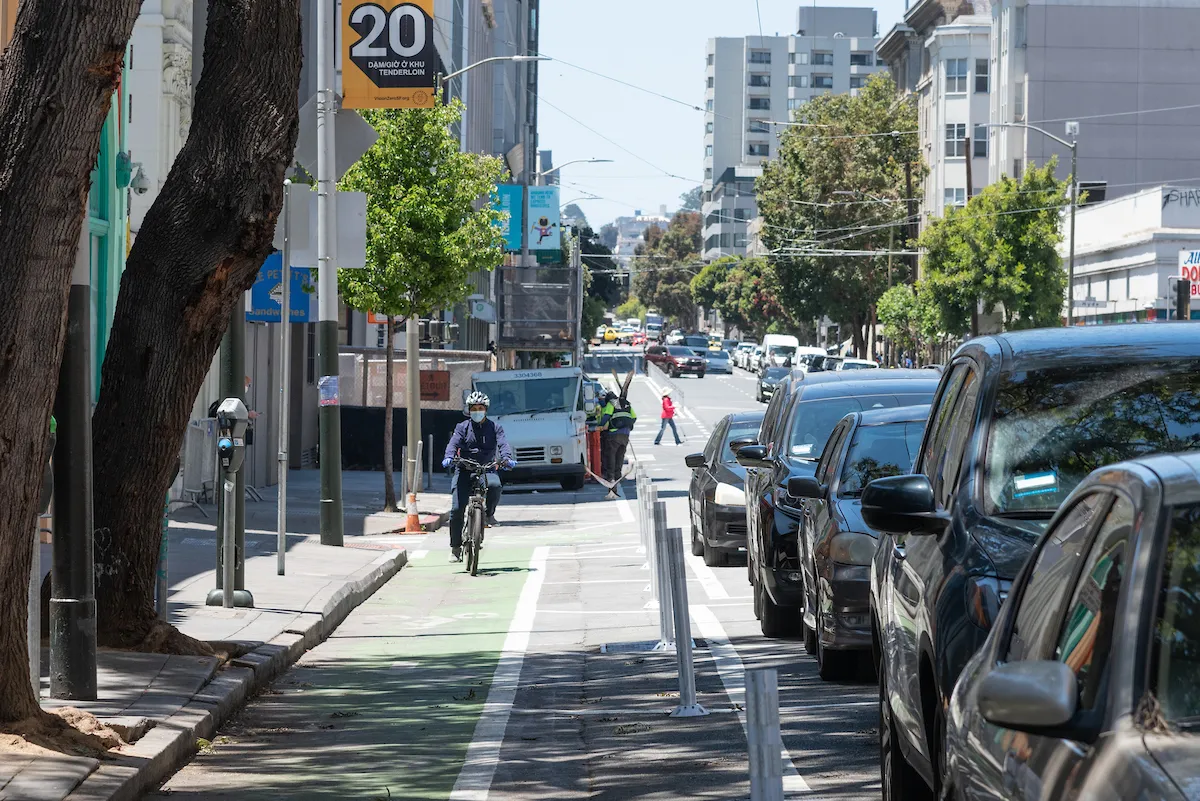
San Francisco Municipal Transportation Agency (SFMTA) has launched two quick-build projects along the Tenderloin stretch of Golden Gate Avenue and Leavenworth Street to address unsafe vehicle speeds.
From 2015-19, one person was hit every nine days on average by a vehicle while walking or cycling in this area, SFMTA says.
Tenderloin is a densely-populated and diverse community that is home to high concentrations of seniors, children, people experiencing homelessness and others with limited-English proficiency – many of whom live below the poverty line.
These groups are most at risk of dying or being severely injured in traffic collisions, SFMTA adds.
Every street in the Tenderloin is on the city’s Vision Zero High Injury Network, the 13% of city streets where 75% of severe and fatal collisions occur.
Last February, the SFMTA initiated preliminary design phases for both projects in which it pursued a joint outreach campaign with local groups and residents. Staff began through door to door canvassing, in-person meetings and emails to collect project feedback.
However, public health restrictions associated with Covid-19 led to a hold on both projects so that staff could allocate resources to address other critical issues that began to arise.
To address social distancing, the agency collaborated with community organisations like St. Anthony’s and Tenderloin Community Benefit District (TLCBD) to implement block closures, physical distancing lanes and temporary vehicle restrictions.
Other improvements include a protected bike lane and active flex space along the 300 block of Golden Gate.
Many meetings shifted to an online format when the projects resumed last autumn.
As part of this transition, the SFMTA partnered with the Tenderloin People’s Congress to hold virtual toolkit forums and community workshops.
Additionally, staff created a virtual open house with interactive features and information about the projects. The website was published in seven different languages and remained open for five weeks, allowing people to view the information and provide feedback.
Throughout construction, SFMTA staff collaborated with local partners such as Code Tenderloin and TLCBD to provide construction notifications to businesses and residents on the corridors.
Some next steps include evaluating the quick-builds, exploring potential future projects and transitioning some Covid-19 emergency streets to quick-build improvements.









